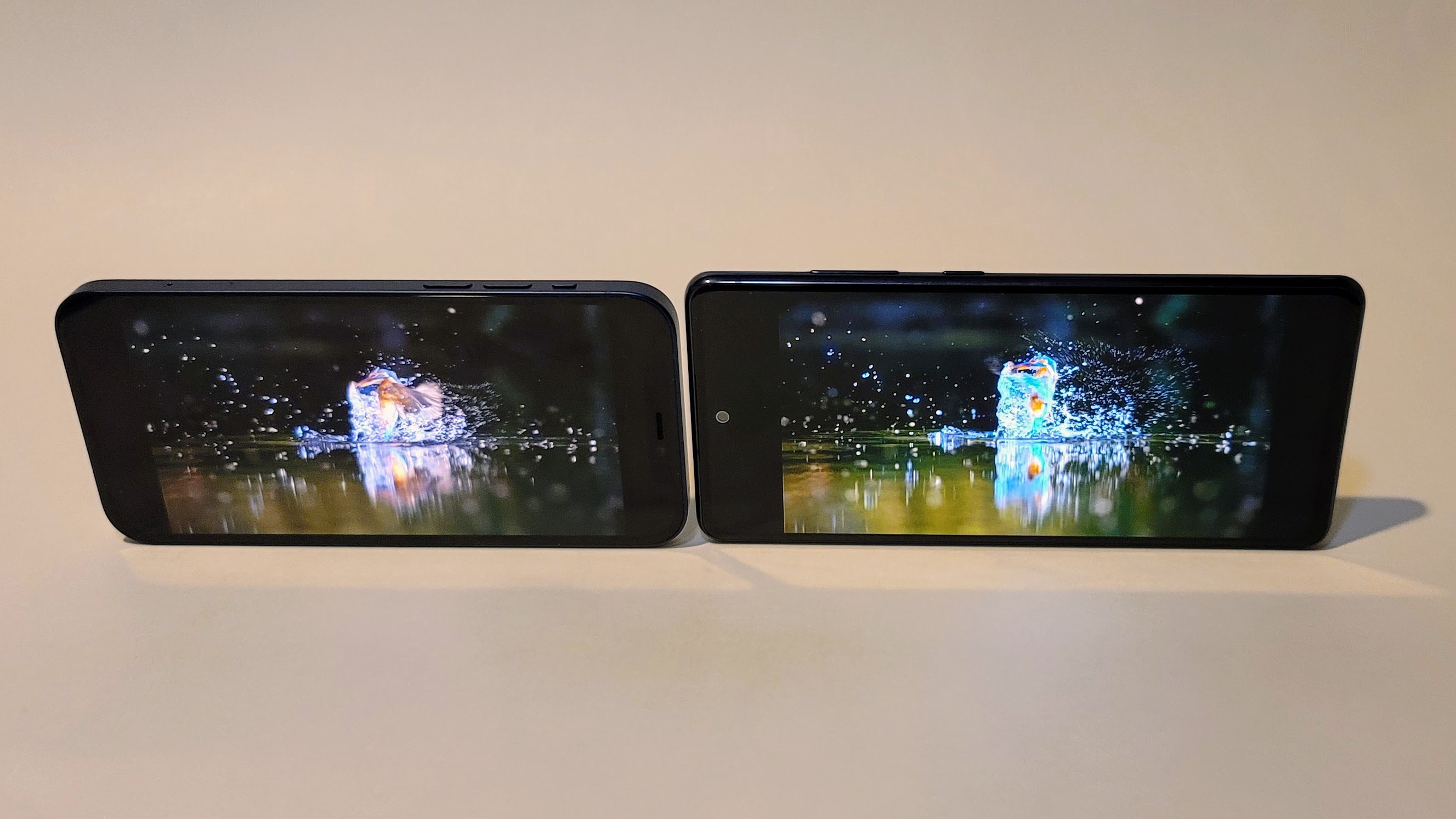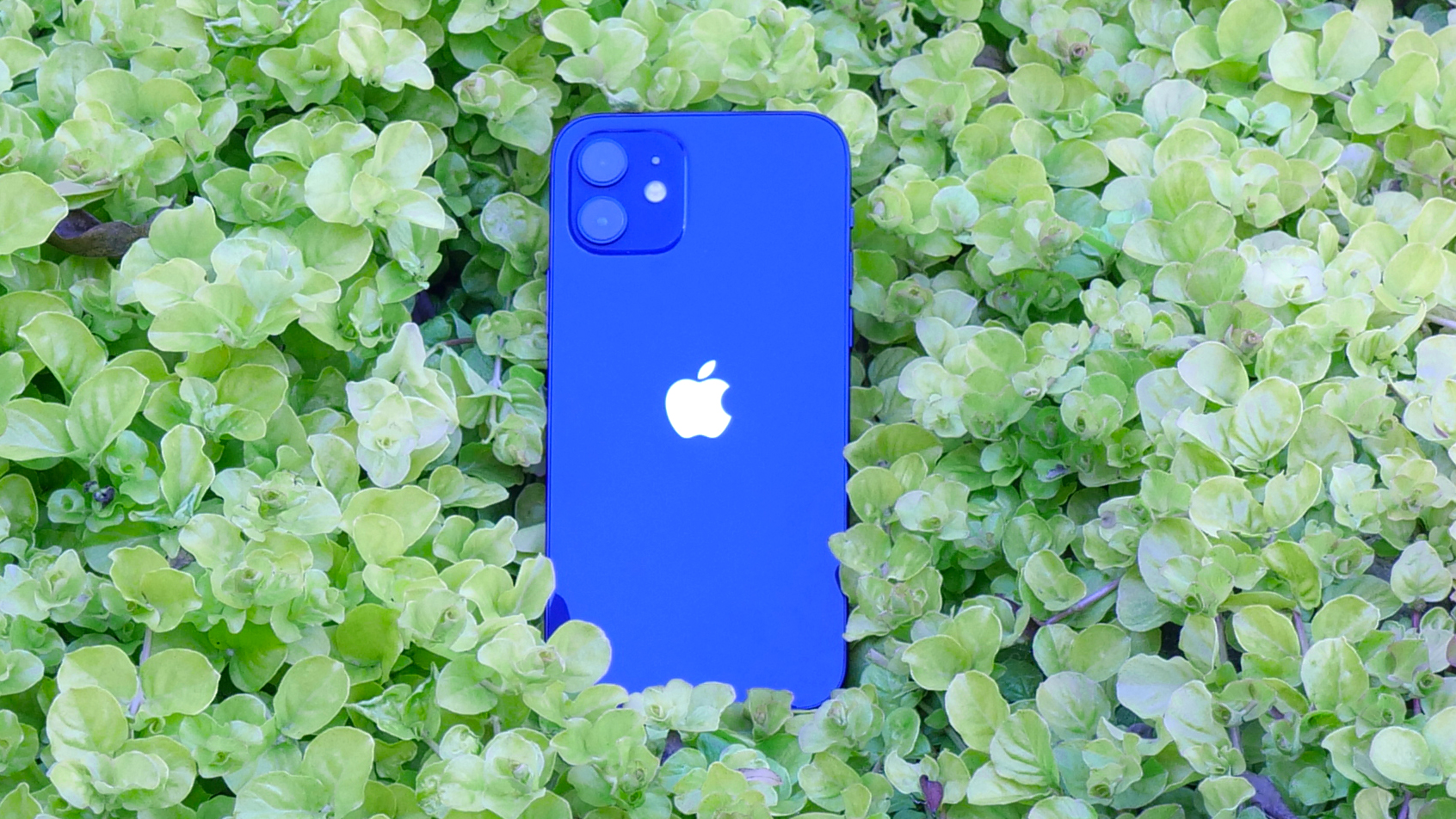iPhone 12 vs. Galaxy S20 FE: Which should you buy?
Two of the best smartphones of 2020 in an Apple vs. Samsung face-off

The iPhone 12 is our recommendation for the best smartphone of 2020 right now. Yes, I have somewhat spoiled the answer to this face off, but there’s more nuance to it than that because the Galaxy S20 FE delivers in a few ways that the iPhone 12 simply can’t match.
Some of these features include the more versatile camera, the high refresh rate display and, of course, the price. The iPhone 12, on the other hand, delivers unmatched software support, the most powerful processor on the mobile market, and excellent video quality.
- iPhone 12 mini review: a pocket-sized powerhouse
- Anker Soundcore Life Q30 review
- iPhone 12 Pro Max vs. Galaxy Note 20 Ultra: Premium flagship fight!
There are absolutely users who would be better served by the Galaxy S20 FE than the iPhone 12; it really is a matter of what you value in your smartphone. So that is precisely what I’m going to walk you through here, with a careful comparison of each phone across seven different categories to determine which of them is the best fit for you.
| Row 0 - Cell 0 | iPhone 12 | Galaxy S20 FE |
| Display | 6.1-inch Super Retina OLED (2,532x1170) | 6.5-inch Super AMOLED FHD+ 120Hz |
| CPU | Apple A14 Bionic | Qualcomm Snapdragon 865 |
| RAM | 4GB | 6GB |
| Storage | Starts at 64GB | Starts at 128GB |
| Rear cameras | 12MP wide (ƒ/1.6); 12MP ultrawide (ƒ/2.4) | 12.2MP f/1.8 (Wide-angle), 12MP f/2.2 (Ultra-wide), 8MP f/2.0 (Telephoto) |
| Front camera | 12MP (f/2.2) | 32MP f/2.0 (Wide-angle) |
| Battery size | 2,851 mAh | 4,500 mAh |
| Water resistance | Yes, IP68 | Yes, IP68 |
| Colors | White, Black, Blue, Green and (PRODUCT) RED | Cloud Lavender, Cloud Mint, Cloud Navy, Cloud White, Cloud Red, Cloud Orange |
| Dimensions | 5.78 x 2.81 x 0.29 inches | 6.29 x 2.9 x .33 inches |
| Weight | 5.8 ounces | 6.7 ounces |
iPhone 12 vs. Galaxy S20 FE: price and value
The iPhone 12 starts at $799 for a 64GB model with 4GB of RAM. You can double your storage to 128GB for another $50, or for $949, you can buy the maxed-out 256GB model we reviewed.
The Galaxy S20 FE starts at $699 for the 128GB model with 6GB of RAM. You can bump that up to 256GB for $769.
The Galaxy S20 FE will take this round; not only is it $100 cheaper at full price, but it offers double the storage of the base iPhone 12 and is also regularly available for $599 and has dipped as low as $549 during Black Friday and Cyber Week sales.
Winner: Galaxy S20 FE
Sign up to receive The Snapshot, a free special dispatch from Laptop Mag, in your inbox.
iPhone 12 vs. Galaxy S20 FE: design
In our iPhone 12 review and our iPhone 12 Pro review, we held forth at length on the new design for the iPhone 12. While yes, it is inarguably a throwback to the old iPhone 4 design, buy the simple truth is that it was a beautiful design and the modernized take remains brilliant.
Some users do find the hard edges to be less comfortable to hold, but that’s not something I have experienced with either the iPhone 12 or the iPhone 12 Pro Max. If it’s a serious concern, even the most minimal of cases would resolve it completely.
The iPhone 12’s overall look wasn’t the only upgrade it saw this year with improvements to durability and water resistance. The former comes from the new ceramic shield display that brings with it four times greater protection against drops. The latter is simply an improvement to its IP68 resistance against dust and water that allows it to survive underwater at up to 20 feet for 30 minutes.

The Galaxy S20 FE design is pedestrian by comparison; it carries over a lot of the design language from the rest of the Galaxy S20 lineup with rounded corners and the fairly prominent camera array on the back of the device. However, it uses a plastic back, which certainly feels less premium than the glass back of the iPhone 12, but it’s also arguably more durable when it comes to the occasional drop.
The argument for the Galaxy S20 FE design is based more on utility than appearance. It’s a perfectly decent looking phone, but it is an absolute pleasure to hold and use. While I don’t find the iPhone 12 design uncomfortable, it certainly isn’t as pleasant in the hand as the Galaxy S20 FE; the curved edges and even that plastic back all make for an excellent user experience.

The Galaxy S20 FE is the larger of the two devices at 6.3 x 2.9 x 0.3 inches versus 5.8 x 2.8 x 0.3 inches, but with the exception of the height, it certainly feels smaller given those rounded edges. If you have small hands, reaching the top of the display on the Galaxy s20 FE one-handed likely won’t be possible, but that’s a trade-off many have made in the interest of a larger display.
Judging purely on the overall look of the two devices, the iPhone 12 wins this hands down. But factoring in the comfort and user-friendliness of the designs, it becomes much closer. Ultimately, the iPhone 12 still deserves the win as it delivers a much more premium look and feel and also should also prove more durable than the Galaxy S20 FE.
Winner: iPhone 12
iPhone 12 vs. Galaxy S20 FE: display
Even with the displays powered off, there is an obvious difference between the two phones, with the Galaxy S20 FE at 6.5 inches compared to the 6.1-inch iPhone 12. Depending on your preferences, that difference could go in the favor of either device, but once you turn the displays on, it becomes pretty apparent which is superior.
The iPhone 12 did get a considerable upgrade this year with the move to a Super Retina XDR OLED with a 2532 x 1170-pixel display, a step up in resolution and display technology from last year’s iPhone 11. However, while the resolution is superior to the Galaxy S20 FE’s FHD+ (2400x1080) AMOLED panel, that is the only real advantage the iPhone 12 display enjoys over the Galaxy S20 FE.
I’ll address our benchmarks to support this in a moment, but as per usual I turned to Our Planet for my own testing. The vibrancy of the Galaxy S20 FE display outshone the iPhone 12 display when I watched the "Fresh Water" episode on both displays side-by-side as a Kingfisher strikes the water and comes up with a delicious meal for itself. The clarity of the water's color is also notably better on the Galaxy S20 FE, appearing more muddied by comparison on the iPhone 12.

As promised, I have hard data to back up what my eyes are telling me. Looking at our colorimeter results, the iPhone 12 covers 81.1% of the DCI-P3 color space, which is woefully far behind the 133.3% that the Galaxy S20 FE manages. Brightness also goes to the Galaxy S20 FE with a max result of 679 nits of brightness compared to 570 nits for the iPhone 12. Both are bright enough for use in any environment, but the Samsung is discernibly brighter.
The iPhone 12 did score another win when it comes to color accuracy with a Delta-E score of 0.29 (lower is better), but it’s by the narrowest of margins as the Galaxy S20 FE managed a 0.3.
The above would alone be enough to secure the win for the Galaxy S20 FE, but it has one final ace in the hole and that’s its 120Hz refresh rate. While the number of apps and games that support the high refresh rate still needs to improve, it’s perceptible even in simply swiping around your home screen with everything looking much smoother and feeling more responsive.
When it comes to the display, this face-off simply is no contest: the Galaxy S20 FE walks away with it.
Winner: Galaxy S20 FE
iPhone 12 vs. Galaxy S20 FE: performance
Alright, iPhone fans, it’s your turn for revenge after that last section. While the iPhone 12 may not be able to hold up to the Galaxy S20 FE display, there is no smartphone on the planet that can challenge the performance of the iPhone 12. (Ok, arguably the iPhone 12 Pro Max and sometimes even the iPhone 12 mini, but you get the idea.)
The iPhone 12 uses the A14 Bionic chip that technically debuted on this year’s iPad Air and, both in terms of real-world usage and synthetic benchmarks it is basically playing in a different league. The Snapdragon 865 in the Galaxy S20 FE is no slouch, and you won’t have any complaints with its performance in daily tasks or even demanding games, but the iPhone 12 is next level.

On the Geekbench 5 overall performance test, the iPhone 12 achieved a score of 3,589, which is bested only by some other iPhone 12 variants. By comparison, the Galaxy S20 FEE hit a multi-core score of 2,928.
In our Adobe Premiere Rush video editing test, the disparity between the two is made much more apparent; the iPhone 12 took 26.5 seconds to finish rendering and exporting a 4K video to 1080p. That same task took 1 minute and 24 seconds on the Galaxy S20 FE, more than three times as long.
On the GFXBench 5.0 benchmark, which tests graphics performance, the iPhone 12 managed 2,186 frames (34 frames per second) on Aztec Ruins Metal in High Tier Off-Screen. That’s more than 50% faster than the Galaxy S20 FE (1,325 frames, 21fps).
Again, I have to stress that both of these phones are incredibly powerful and will not present a problem for you in any task that you could reasonably give them; the difference is that I’ll be able to say the same about the iPhone 12 in three years from now.
Winner: iPhone 12
iPhone 12 vs. Galaxy S20 FE: battery life and charging
Neither phone really colors itself in glory when it comes to battery life. In our Laptop Mag battery test (which involves continuous web surfing at 150 nits of brightness), the iPhone 12 \lasted only 8 hours and 24 minutes. The Galaxy S20 FE manages to better it by over 30 minutes with 8 hours and 58 minutes, but that’s well below the 11 hours and beyond what you’ll see from smartphones with the best battery life.
5G is somewhat to blame here; if you disable 5G on the iPhone 12 you will see a significant boost, up to 10 hours and 23 minutes in our testing on 4G. We didn’t conduct that test on the Galaxy S20 FE, but it’s reasonable to expect similar gains. I will also say that both devices in my real-world usage got me through a day without a problem, just make sure you get it on the charger at night as there’s no chance you’ll make it into a second day.

Both smartphones support wireless charging with Qi-compatible chargers, but of course, the iPhone 12 Pro Max also adds new MagSafe charging. This is a combination of Qi and a circular magnet located on the back of the iPhone. The MagSafe charger is available for $39 from Apple.
MagSafe is the icing on the cake for the iPhone 12 Pro Max’s victory in this category.
Winner: iPhone 12 Pro Max

iPhone 12 vs. Galaxy S20 FE: cameras
The iPhone 12 features three 12-megapixel cameras: a primary wide-angle with an f/1.6 aperture, an ultra-wide lens with an f/2.4 aperture, and the front-facing TrueDepth camera with an f/2.2 aperture. The Galaxy S20 FE adds one more camera to the mix with a 12MP (f/1.8) primary wide-angle lens, a 12MP (f/2.2) ultra-wide lens, an 8MP telephoto (ƒ/3.0) and a 32MP (f/2.2) front-facing camera.
Neither one necessarily blows you away with its specs, although that f/1.6 aperture on the iPhone 12 primary lens is a bit shocking. The Galaxy S20 FE, on the other hand, is pretty middle-of-the-road on the actual sensors, but it gives you incredible range with its triple cameras on the back and a high megapixel count for your front-facing camera.
Both phones are capable of some excellent results as you can see in this collection of photos from the iPhone 12.

iPhone 12 Ultra-wide


iPhone 12 wide-angle 5x

And here are the same photos captured with the Galaxy S20 FE.

Galaxy S20 FE ultra-wide camera

Galaxy S20 FE - wide angle

Galaxy S20 FE - wide angle 5x

Galaxy S20 FE - wide angle
I have a slight preference for the Galaxy S20 results in these samples, but there are unquestionably areas where the iPhone 12 is superior. The iPhone 12 ultra-wide seems to be pushing pretty cool (blue) versus the reality of the scene when I took that photo, but I don't think that necessarily detracts from the photo.
The TrueDepth front-facing camera on the iPhone 12 definitely yields better selfies than the Galaxy S20 FE. I also occasionally ran into focusing issues with the Galaxy S20 FE, which never happened with the iPhone 12. The Galaxy S20 FE will let you get some shots that you couldn’t get with the iPhone 12 due to its greater range, but in terms of reliably capturing the shot, the iPhone 12 wins out.
There’s also reason to believe that the photos on the iPhone 12 are only going to get better as the new A14 Bionic chipset offers a number of features to specifically enhance its computational photography.
Winner: iPhone 12
iPhone 12 vs. Galaxy S20 FE: software
No, I’m not inviting an Android vs. iOS debate here. There are relative merits to both OS' and as someone that uses both on a daily basis, I think the majority of the “clear advantages” stated on either side are simply a function of what users of both platforms have become accustomed to over the years.
There is, however, one clear advantage Apple enjoys in this regard, and that is the upgrade support. The iPhone 12 currently runs the most recent version of iOS, but it will continue to do so for 5-6 years with updates arriving the same day they arrive for the iPhone 17 or whatever Apple decides to call it at that point. This simply isn’t going to be the case for the Galaxy S20 FE; it will liekly likely two major software updates and three years of security updates before support ends.
Yes, Android has offloaded a lot of software updates to apps to avoid this problem and has taken this further with Google Play Services updates, regardless, software support remains an advantage for Apple.
If you only ever keep your phones for a couple of years, this may be completely irrelevant to you, but it is worth considering.
Winner: iPhone 12

Overall winner: iPhone 12
Taken as a whole, there is no way to avoid the iPhone 12 as the overall winner of this face-off. That said, you can’t go wrong with either of these smartphones. Each one excels at a number of categories and even where they do cede a category to the other, it is typically a matter of good vs. great.
The iPhone 12 is the better option for a user who wants to hold onto their phone for 3-5 years, someone that really pushes the limits of what’s possible on a smartphone, someone that wants to snap a photo and know that it’s going to be just fine, and anyone that will appreciate the improved durability.
The Galaxy S20 FE, on the other hand, could save you a few hundred dollars off the comparable iPhone 12; it gives you a lot more flexibility with your photography and it will elevate whatever content you are watching with its bright and vivid display.
Sean Riley has been covering tech professionally for over a decade now. Most of that time was as a freelancer covering varied topics including phones, wearables, tablets, smart home devices, laptops, AR, VR, mobile payments, fintech, and more. Sean is the resident mobile expert at Laptop Mag, specializing in phones and wearables, you'll find plenty of news, reviews, how-to, and opinion pieces on these subjects from him here. But Laptop Mag has also proven a perfect fit for that broad range of interests with reviews and news on the latest laptops, VR games, and computer accessories along with coverage on everything from NFTs to cybersecurity and more.

